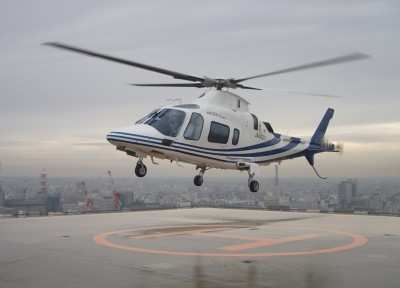Comment Period Closes January 10
 The FAA has proposed broad new rules for helicopter operators,
including air ambulances, which, if finalized, would require
stricter flight rules and procedures, improved communications and
training, and additional on-board safety equipment.
The FAA has proposed broad new rules for helicopter operators,
including air ambulances, which, if finalized, would require
stricter flight rules and procedures, improved communications and
training, and additional on-board safety equipment.
"This is a significant proposal that will improve the safety of
many helicopter flights in the United States," said Transportation
Secretary Ray LaHood. "The FAA's initiatives have helped the
helicopter industry make progress on many safety issues, but it's
time to take steps towards mandating these major safety
improvements."
Under the proposed rules published Thursday in the Federal
Register, operators would use the latest on-board technology and
equipment to avoid terrain and obstacles. The proposal also
contains provisions which, if finalized, would require operators to
use enhanced procedures for flying in challenging weather, at
night, and when landing in remote locations.
"We can prevent accidents by preparing pilots and equipping
helicopters for all of the unique flying conditions they
encounter," said FAA Administrator Randy Babbitt. "These new rules
are designed to protect passengers, patients, medical personnel,
and pilots."

The FAA document includes new proposals covering a variety of
helicopter operators.
The proposed rules would require air ambulance operators to:
- Equip with Helicopter Terrain Awareness and Warning Systems
(HTAWS).
- The proposal seeks comments on requirements for light-weight
aircraft recording systems (LARS).
- Conduct operations under Part 135, including flight crew time
limitation and rest requirements, when medical personnel are on
board.
- Establish operations control centers if they are certificate
holders with 10 or more helicopter air ambulances.
- Institute pre-flight risk-analysis programs.
- Conduct safety briefings for medical personnel.
- Amend their operational requirements to include Visual Flight
Rules (VFR) weather minimums, Instrument Flight Rules (IFR)
operations at airports/heliports without weather reporting,
procedures for VFR approaches, and VFR flight planning.
- Ensure their pilots in command hold an instrument rating.

Under the proposal, all commercial helicopter operators would be
required to:
- Revise IFR alternate airport weather minimums.
- Demonstrate competency in recovery from inadvertent instrument
meteorological conditions.
- Equip their helicopters with radio altimeters.
- Change the definition of "extended over-water operation" and
require additional equipment for these operations.

The proposed rules would require all Part 135 aircraft, i.e.
helicopter and fixed wing on-demand operators, to:
- Prepare a load manifest.
- Transmit a copy of load manifest documentation to their base of
operations, in lieu of preparing a duplicate copy.
- Specify requirements for retaining a copy of the load manifest
in the event that the documentation is destroyed in an aircraft
accident.
In addition, the proposal would require Part 91 general aviation
helicopter operators to revise the VFR weather minimums.
Since August 2004, the FAA has promoted initiatives to reduce
risk for helicopter air ambulance operations. While accidents did
decline in 2005 and 2006, 2008 proved to be the deadliest year on
record with six accidents that claimed 24 lives. Overall, from 1992
through 2009, 135 helicopter air ambulance accidents claimed 126
lives. From 1994 through 2008, there were also 75 commercial
helicopter accidents (excluding air ambulances) that resulted in 88
fatalities.
The estimated cost of the proposal in present value for the air
ambulance industry is $136 million with a total benefit of $160
million over 10 years. The cost for other commercial operators is
$89 million with a total benefit of $115 million over 10 years.
The 90-day public comment period closes on January 10, 2011.
 ANN's Daily Aero-Linx (04.16.24)
ANN's Daily Aero-Linx (04.16.24) Aero-News: Quote of the Day (04.16.24)
Aero-News: Quote of the Day (04.16.24) Airborne 04.10.24: SnF24!, A50 Heritage Reveal, HeliCycle!, Montaer MC-01
Airborne 04.10.24: SnF24!, A50 Heritage Reveal, HeliCycle!, Montaer MC-01 Airborne 04.12.24: SnF24!, G100UL Is Here, Holy Micro, Plane Tags
Airborne 04.12.24: SnF24!, G100UL Is Here, Holy Micro, Plane Tags Airborne-Flight Training 04.17.24: Feds Need Controllers, Spirit Delay, Redbird
Airborne-Flight Training 04.17.24: Feds Need Controllers, Spirit Delay, Redbird






